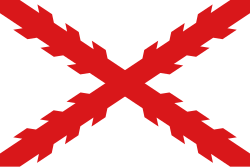| Province of Verapaz Provincia de la Verapaz(Spanish) | |
|---|---|
| Province of Kingdom of Guatemala | |
| 1544–1821 | |
| Capital | Cobán |
| Population | |
• ca 1550 | ca 52,000 |
• 1577 | ca 3,000 |
| Government | |
| • Type | Monarchy |
| Sovereign | |
• 1544-1556 | Charles I / first |
• 1813-1821 | Ferdinand VII / last |
| Provincial head | |
• 1544-1550 | Bartolomé de las Casas / first |
| Legislature | Audiencia of Guatemala / 1544-1564; 1570-1821 Audiencia of Mexico / 1564-1570 |
| Historical era | Spanish colonisation to Latin American independence |
• Established | 1544 |
• Disestablished | 1821 |
| Today part of | Belize / de jure Guatemala |
| Native name per Luján Muñoz 2005a, p. 693 and de la Puente Brunke & Guevara Gil 2008, p. 587. Start date per Luján Muñoz 2005a, p. 695. Capital per Luján Muñoz 2005a, p. 695. Population per Luján Muñoz 2005b, pp. 292, 322. Provincial leaders per xx. Legislature per de la Puente Brunke & Guevara Gil 2008, pp. 556–557, 561 and Luján Muñoz 2005b, pp. 99–100. | |
Verapaz, formerly Tezulutlan, was a second order subdivision of the former Kingdom of Guatemala, itself a constituent part of New Spain. [n 1]
